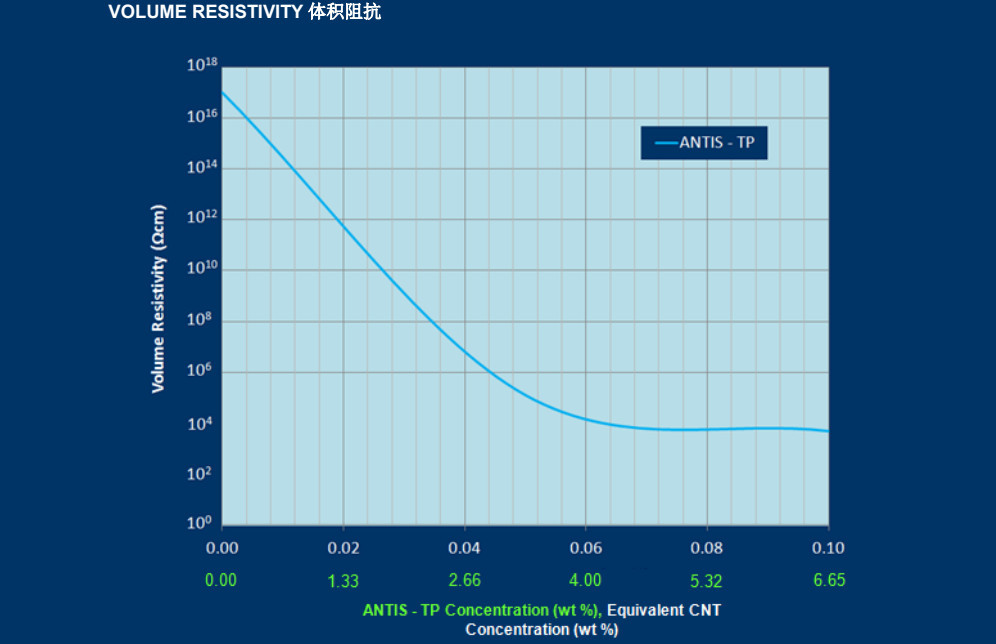Product description
Product description
A thermoplastic additive designed specifically for thermoplastic products to achieve static dissipation and conductive use, consisting of carbon nanotubes with a multi-wall structure and paraffin oil.
Products
Product form: viscous paste
Carrier fluid: white paraffin mineral oil
Carrier fluid boiling point: 274℃
Carbon nanotube concentration: 1.5% by weight
Specific gravity: ~0.99
Color: black
Carrier solvent/diluent: None
If the required surface resistivity ≥ 106 Ω is added to the formulation, the carbon content will be extremely low, so the ANTIS-TP series thermoplastic additives are usually equated to paraffinic mineral oil for stoichiometric calculations.

The volumetric resistivity is measured by mixing ANTIS-TP with PP powder and then mold casting the specimen for testing. The volume resistivity may vary for different alkali polymers.
The wt% weight percentage of ANTIS-TP means the amount of ANTIS-TP thermoplastic additive in the final product (compound). It is calculated as follows.
Example:
The weight percentage of 5 wt . % of ANTIS-TP thermoplastic additive i.e. - the final product (compound) using 5 g of ANTIS thermoplastic additive and 95 g of PP powder.
Product Applications
ESD/anti-static protection
Batteries and Fuel Cells
3D Printing Materials
Antistatic Plastic Film
Electronic Product Packaging
Conductive Wires
Conductive fibers
Smart Vehicles
User's Guide
Method 1
The polymer pellets and/or powder are mixed with the ANTIS-TP thermoplastic additive in wet powder mixing equipment (e.g., belt mixer) until the ANTIS-TP thermoplastic additive is uniformly coated on the plastic pellets and/or powder.
The polymer/ANTIS-TP blend can then be melt blended using plastics processing equipment (e.g., single-screw or twin-screw extruder).
Method 2Melt mixing of polymer pellets and/or powders with ANTIS-TP thermoplastic additive directly in a plastics processing machine such as an extruder (e.g., single-screw or twin-screw extruder) ANTIS-TP thermoplastic additive can be introduced into the extruder system using a liquid/paste injector/feeder
Measurement impedance
The current is usually very low when measuring the resistance of thin layers of electrostatically dissipative coatings (>106 Ω). It is important to use highly sensitive measurement equipment, such as a megohmmeter with a 5-lb resistance probe that meets the requirements of ASTM F150 or a DC four-point probe analyzer with silver-plated electrodes that meets the requirements of ANSI/ASTM D257. In both cases, the electrode has a much lower resistance than the sample, so care should be taken to prevent sample contamination (in the case of silver-plated electrodes).








